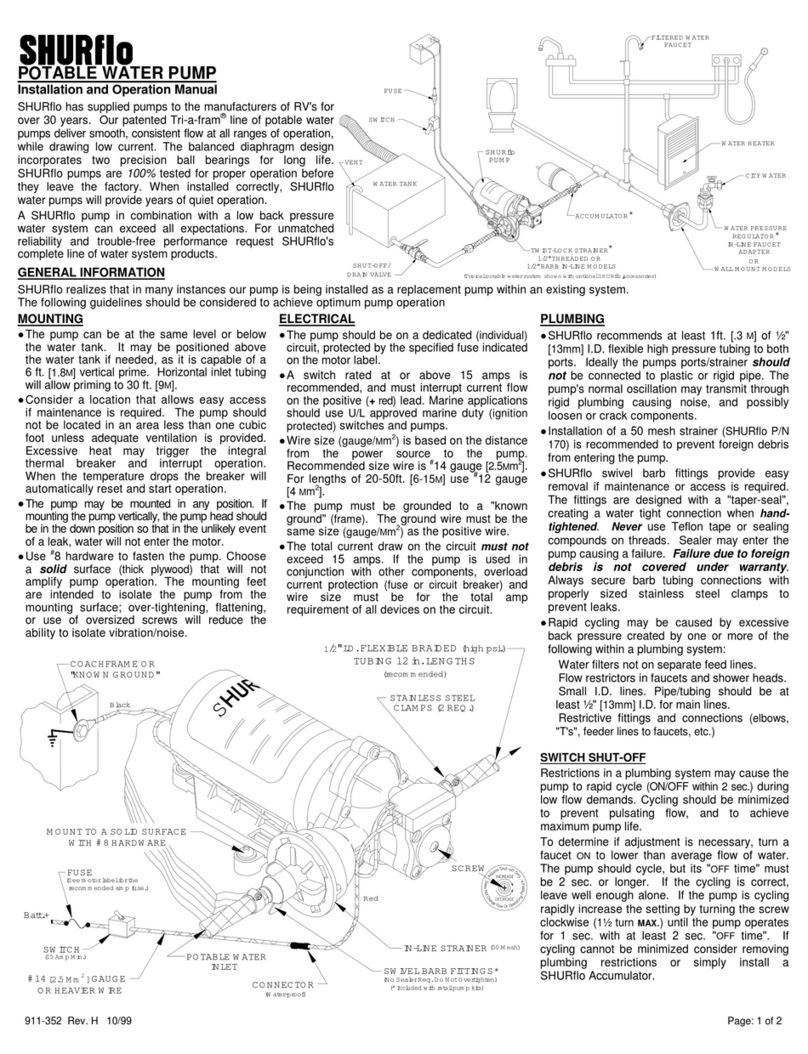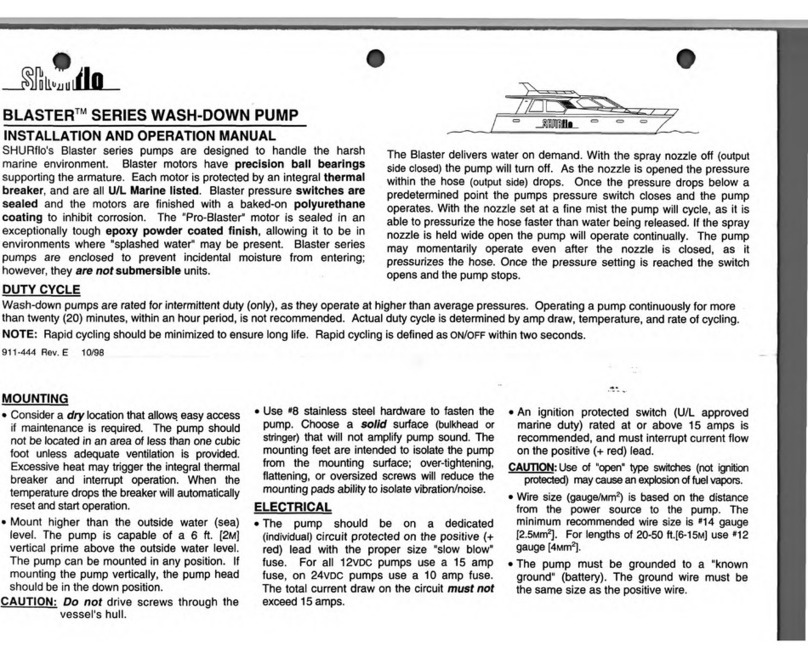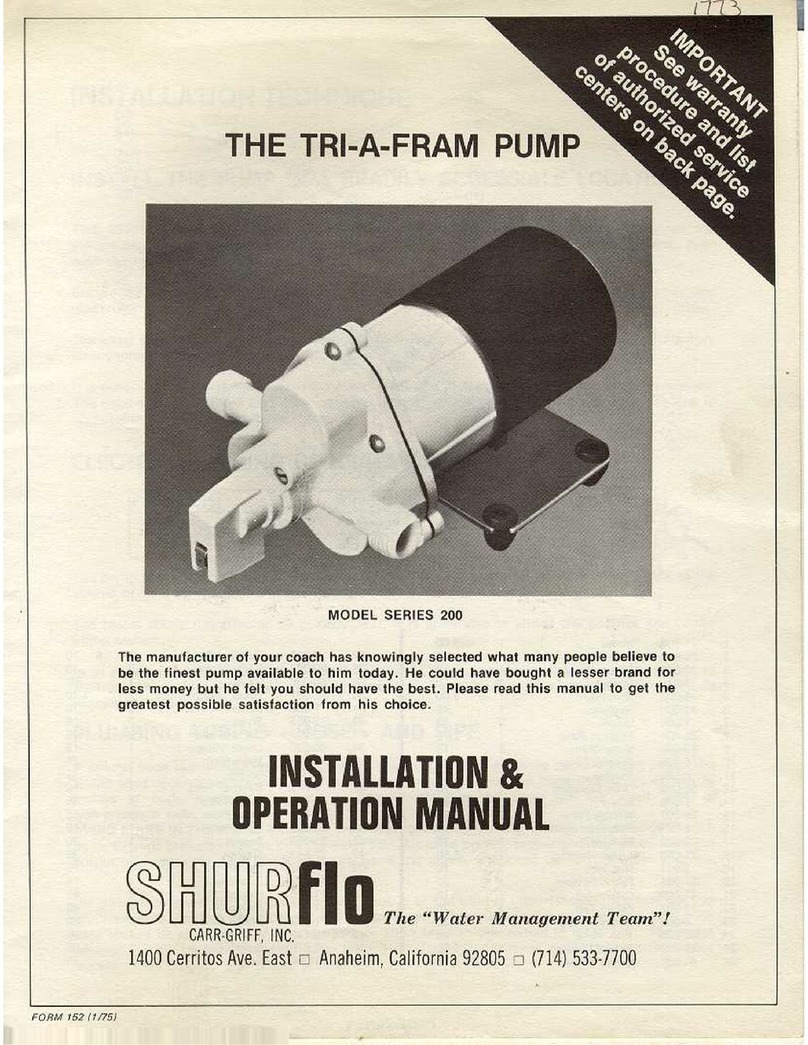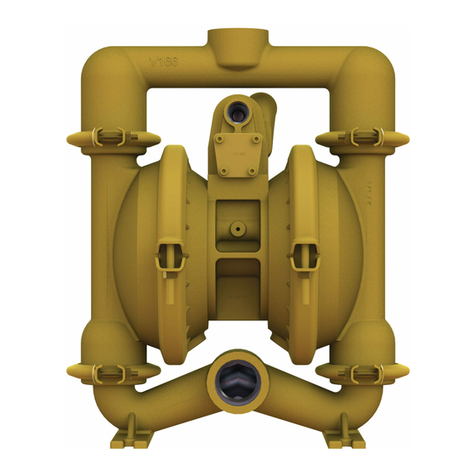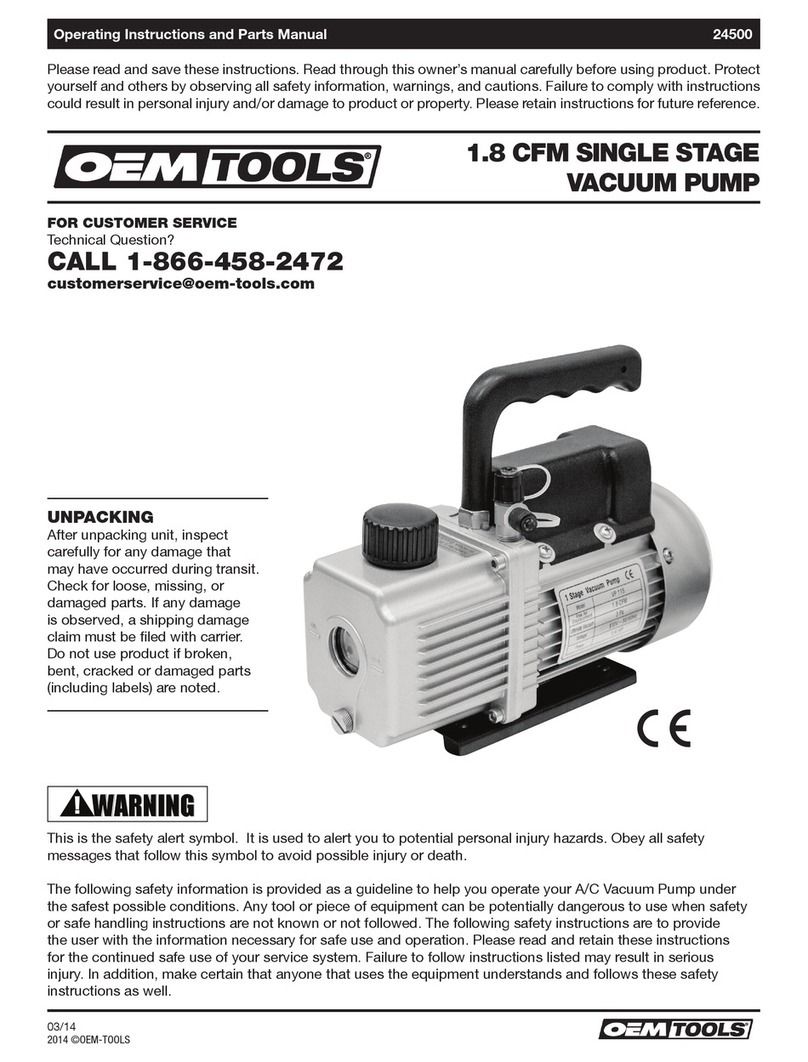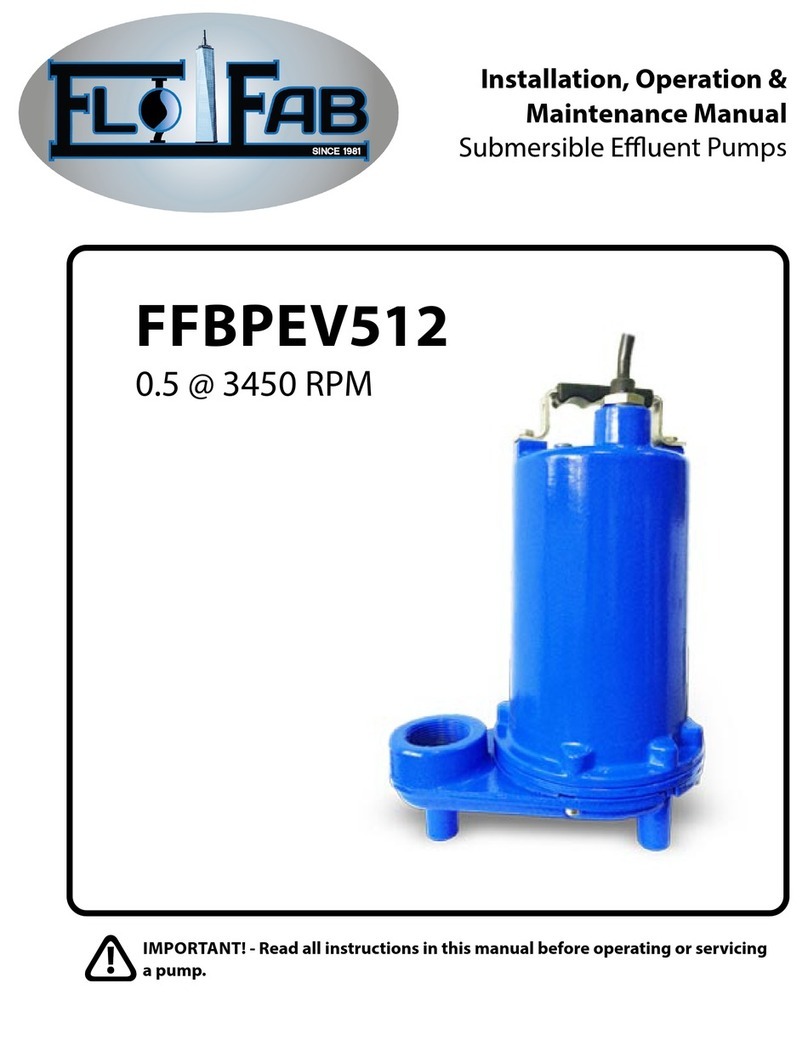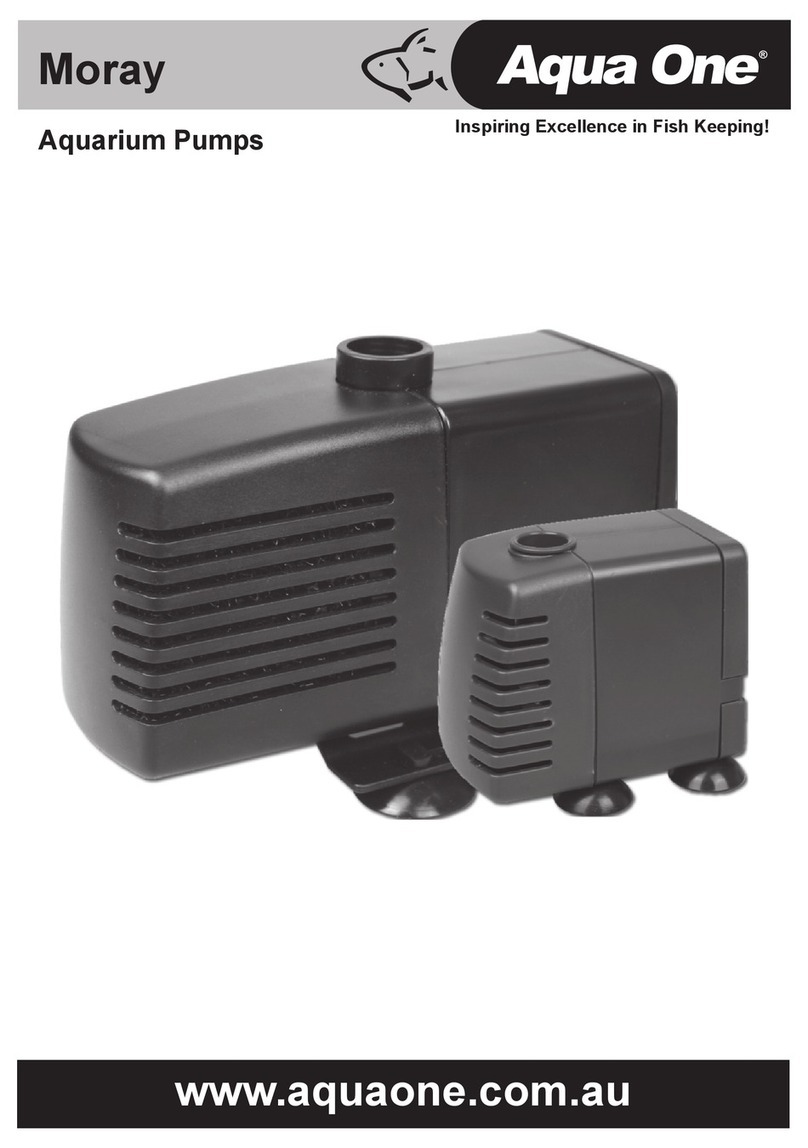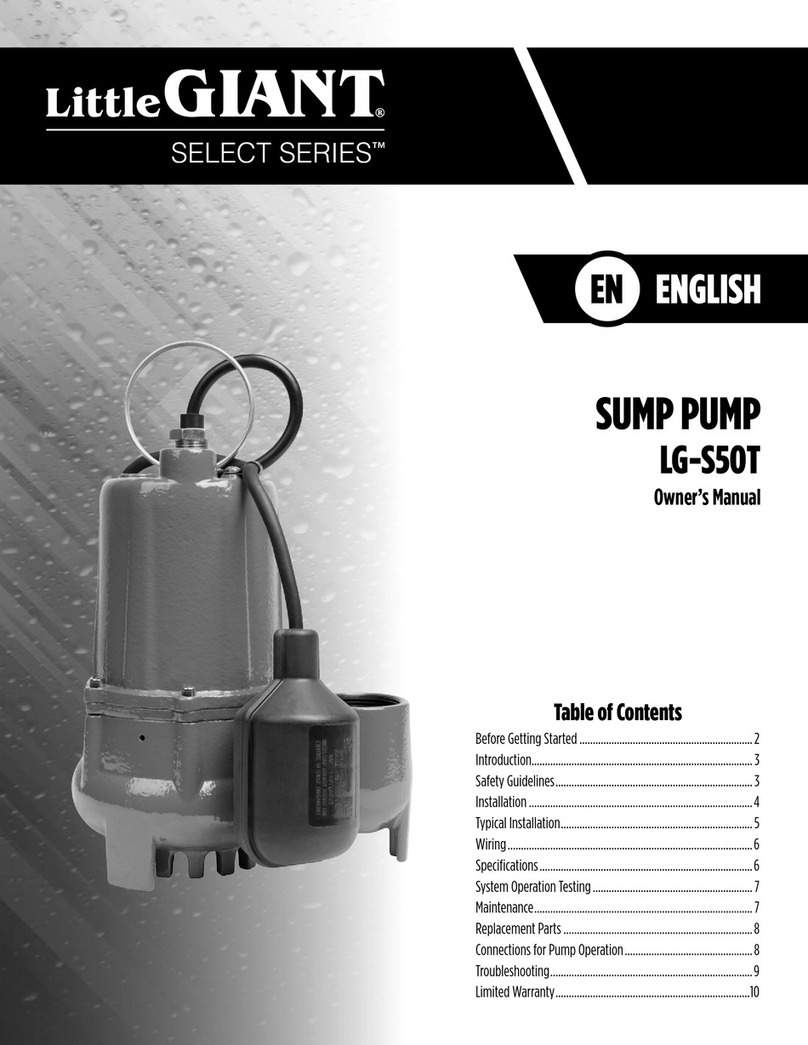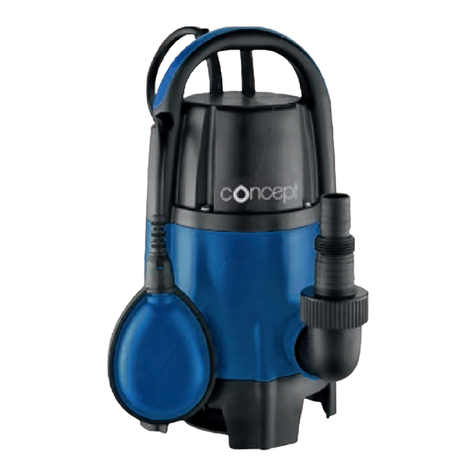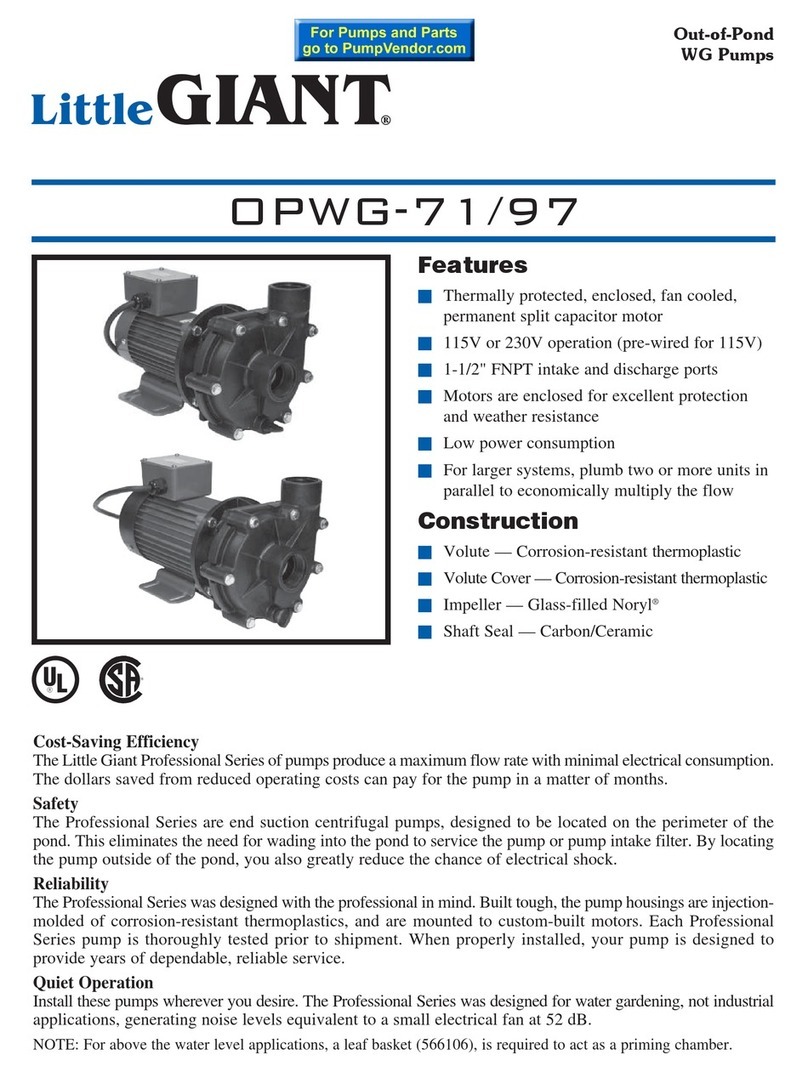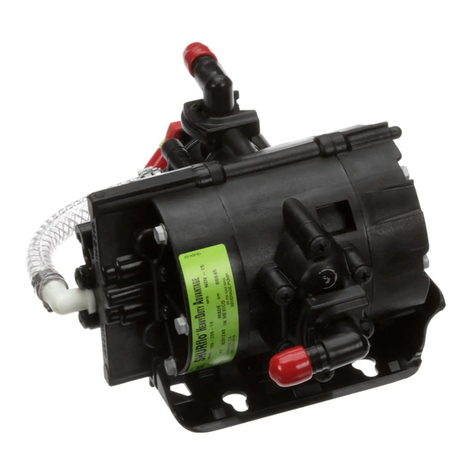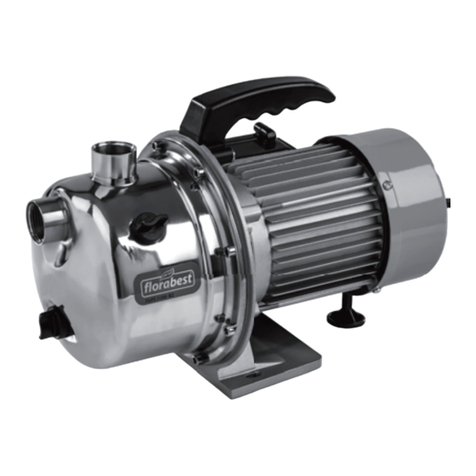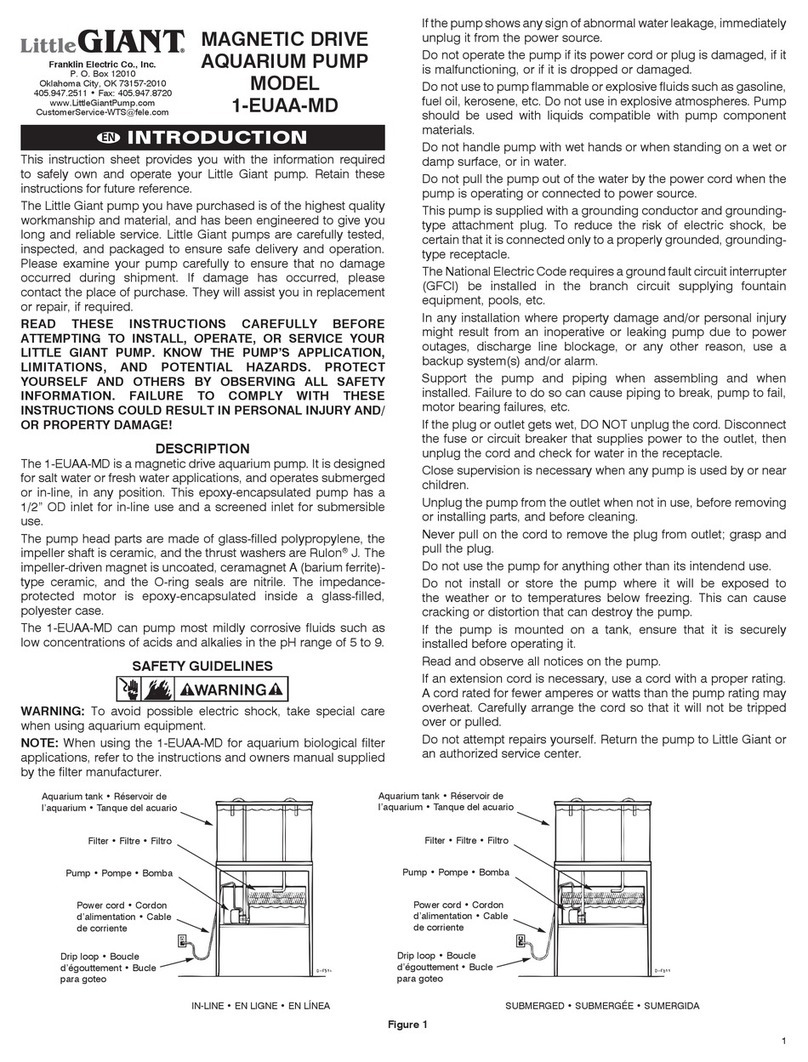
"Check, Out"
Procedure
Examine the installation. Is it complete . . . Are the
clamps tight . . Are there any kinks in the hose . . . Is
thefusegood. ..etc?
Use a fully charged battery or 12 volt DC converter
of at least 10 amp capacity.
INITIAL OPERATION
1. Fillthe tank with water
2. Open allfaucets . . . Hot and Cold.
3. Switch pump to "On" position. Allow time for the hot
water tank to fill. Shut off each faucet as flow becomes
steady and free of air. Shutting off the last faucet
should cause the pump to shut off.
To check for leaks we recommend a positive pres-
sure check with a pressure gauge. A drop in pressure with
all faucets off will indicate a leak in the system. Correct all
leaks no matter how small.
Trouble
Shooting
Any or allof the following problems can be caused
by loose pump head screws.
Motor does not operate-ls the battery charge too
low? Are the wires disconnected. Is the switch in the "on"
position? Is the fuse good? Is the pump head frozen? If so,
place a lamp bulb near the pump to thaw.
Pump runs but water does not appear-ls there
water in the tank? Are there kinks in the hose? Is air
leaking into the inlet hose or fittings? Is the inlet line
clogged? To check, remove the outlet hose and try again.
If water flows the problem is further on in the system.
Motor runs but water sputters-lndicates air get-
ting into the lines. Check hose and clamps on the input
side of the pump. Restart and allow air to clear from the
lines and hot water tank.
Pump cycles (rapid on/off)-Cycling of the pump
is normal if the flow of water is restricted to less than the
flow capacity of the pump. For example, a faucet partially
opened. Under these conditions the pump will cycle r-:n
and off in a rhythmic interval.
Abnormal cycling-lf the pump cycles on and off
when all faucets are closed, something is wrong. Most
likely there is a leak somewhere. Check faucets for drip-
ping and especially the toilet valve. Correct any leak no
matter how small. Also check the city water input.
If no leak can be detected, shut off the pump.
Remove the output line. Insert a cap or plug in the open
end. You can make a plug from a barb fitting with a cap
tightly screwed on the threads.
If a threaded fitting, use a cap or plug. Either way-
there must be no leak. Turn the pump switch on. The
pump should come on, run a few seconds and shut off . If
the pump remains off the problem is not the pump. The
problem is in the system. If however, the pump goes on
and off there may be a problem in the pump. There may
be an internal pump leak which allows water to escape
from the high pressure area back into the low pressure
inlet area causing the pump to cycle. This may be caused
by a valve held open by a foreign particle or by a crack in
the casting.
Pump does not shut off-The wallswitch may be
used for temporary control of the pump. A low battery
may be the cause. Voltage should be7)t/qvolts or more to
the pump. Low voltage may provide energy enough for
the motor to run but not enough for it to reach shut off
pressure. Also the switch mechanism may be stuck. Try
tapping the switch cap on the end of the pump with the
handle of a screwdriver.
Should you be unable to isolate the problem, contact
Shurflo via one of the toll free numbers and request the
name of the nearest Shurflo service centers for pro-
fessionalhelp.



